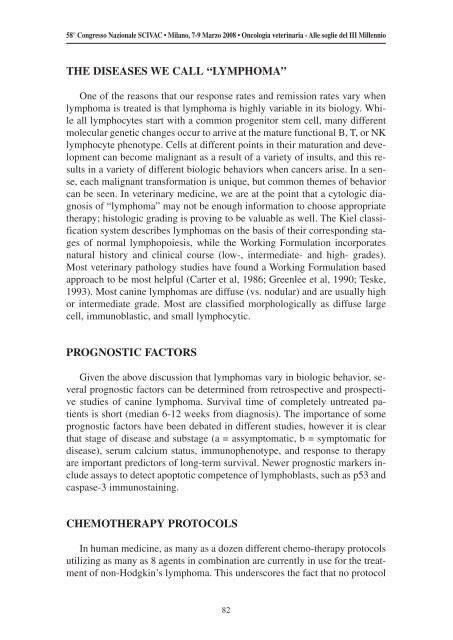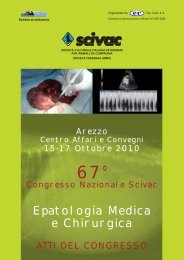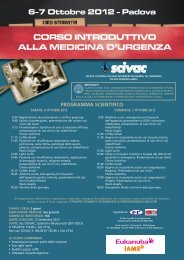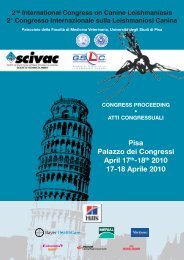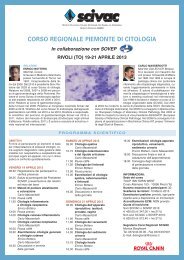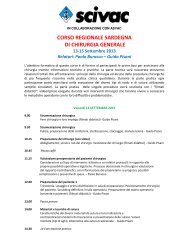58° Congresso Nazionale SCIVAC: Oncologia veterinaria
58° Congresso Nazionale SCIVAC: Oncologia veterinaria
58° Congresso Nazionale SCIVAC: Oncologia veterinaria
Create successful ePaper yourself
Turn your PDF publications into a flip-book with our unique Google optimized e-Paper software.
58° <strong>Congresso</strong> <strong>Nazionale</strong> <strong>SCIVAC</strong> • Milano, 7-9 Marzo 2008 • <strong>Oncologia</strong> <strong>veterinaria</strong> - Alle soglie del III Millennio<br />
THE DISEASES WE CALL “LYMPHOMA”<br />
One of the reasons that our response rates and remission rates vary when<br />
lymphoma is treated is that lymphoma is highly variable in its biology. While<br />
all lymphocytes start with a common progenitor stem cell, many different<br />
molecular genetic changes occur to arrive at the mature functional B, T, or NK<br />
lymphocyte phenotype. Cells at different points in their maturation and development<br />
can become malignant as a result of a variety of insults, and this results<br />
in a variety of different biologic behaviors when cancers arise. In a sense,<br />
each malignant transformation is unique, but common themes of behavior<br />
can be seen. In veterinary medicine, we are at the point that a cytologic diagnosis<br />
of “lymphoma” may not be enough information to choose appropriate<br />
therapy; histologic grading is proving to be valuable as well. The Kiel classification<br />
system describes lymphomas on the basis of their corresponding stages<br />
of normal lymphopoiesis, while the Working Formulation incorporates<br />
natural history and clinical course (low-, intermediate- and high- grades).<br />
Most veterinary pathology studies have found a Working Formulation based<br />
approach to be most helpful (Carter et al, 1986; Greenlee et al, 1990; Teske,<br />
1993). Most canine lymphomas are diffuse (vs. nodular) and are usually high<br />
or intermediate grade. Most are classified morphologically as diffuse large<br />
cell, immunoblastic, and small lymphocytic.<br />
PROGNOSTIC FACTORS<br />
Given the above discussion that lymphomas vary in biologic behavior, several<br />
prognostic factors can be determined from retrospective and prospective<br />
studies of canine lymphoma. Survival time of completely untreated patients<br />
is short (median 6-12 weeks from diagnosis). The importance of some<br />
prognostic factors have been debated in different studies, however it is clear<br />
that stage of disease and substage (a = assymptomatic, b = symptomatic for<br />
disease), serum calcium status, immunophenotype, and response to therapy<br />
are important predictors of long-term survival. Newer prognostic markers include<br />
assays to detect apoptotic competence of lymphoblasts, such as p53 and<br />
caspase-3 immunostaining.<br />
CHEMOTHERAPY PROTOCOLS<br />
In human medicine, as many as a dozen different chemo-therapy protocols<br />
utilizing as many as 8 agents in combination are currently in use for the treatment<br />
of non-Hodgkin’s lymphoma. This underscores the fact that no protocol<br />
82


